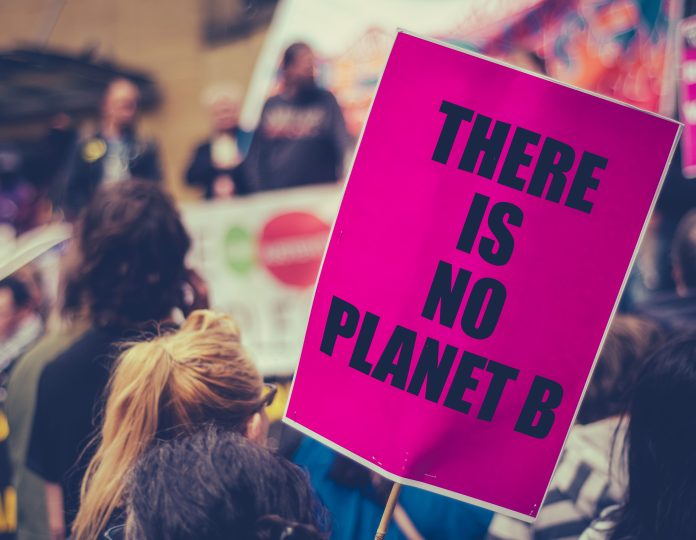Tomer Shalit, CEO and Founder of ClimateView, shares his reflections on moving the climate discussion beyond the diagnostic paradigm and towards concrete action
To date, over 1,700 local governments in 30 countries have made climate emergency declarations, yet we still remain firmly in the diagnostic stage. Everyone wants to become climate neutral, but it seems that no one truly knows how, or from which blueprint they should be working. So how do we even start to approach such a mammoth task?
A great place to begin is by reflecting on the most iconic example of a complex mission outside of the climate sphere. Sixty years ago, John F. Kennedy the 35th president of The United States declared that humankind would put a man on the moon, and bring him safely back again before the end of the decade.
Much like the climate transition of today, this too was an extremely bold ambition; yet at the time of the speech, no one truly knew how it would be done. What they did know, however, was that it was physically possible, even if it was far-fetched and by setting the goal, Kennedy gave his nation a clear sense of direction and an endpoint towards which to strive.
It could be argued that this clear statement of intent should be hailed as the real “first small step” which led to mankind’s eventual “giant leap.”
Before any real production could begin, the mission needed to be broken down into a number of “deliverables,” with each of these actions requiring set targets and different actors to be involved based upon their area of expertise. Perhaps most importantly, every single one of these targets had to be of the same quality as the overall mission in order to drive it forward successfully. When the day of the moon landing finally arrived, every single part of the module encapsulated a breakthrough in its own right, with each part integral to the overall mission.
Whether accomplishing a lunar landing or a global climate transition, setting an overarching goal is the easy part; the difficulty lies in transforming the bold goal into equally bold and achievable targets.
The Paris Agreement
The Paris Agreement, signed by 197 countries across the world, is incredibly ambitious and some countries and cities have gone even further, setting area goals for climate neutrality by as soon as 2030, even 2025. Now that these goals have been set, they must be broken down into actionable targets moving beyond the diagnostic paradigm and towards developing a blueprint that will outline concrete strategies and enable meaningful progress.
When considering climate strategies, it is vital to understand that each target represents a bigger societal shift. Essentially, each “shift” represents a move from high-carbon emission state to a lower one within each sector (e.g. shifting the way we transport ourselves from using fossil fuels to electricity). This will influence everything from the way we heat our homes, to the way we build our infrastructure, to how we produce our food. Therefore, the climate transition cannot be viewed as one big shift, but rather a number of smaller shifts (with each requiring measurable targets), the sum of which must add up to the overall reduction goal.
Collaboration
Achieving carbon neutrality will require collaboration from nearly every part of society from scientists, policy leaders, city planners, engineers, strategists, and, of course, members of the public. The value of involving as many stakeholders as early on as possible should not be underestimated and making the initial blueprints transparent and publicly-accessible allows for wider input, faster progress, and more holistic change.
Other major climate mitigation success factors include accountability and leadership within large and mid-sized municipalities. Much of this work needs to take place on a city level, as local governments continue to prove themselves adept at deploying fast-paced innovation and digitalisation in their specific regions with their own bold goals and blueprints.
Unfortunately, while we have alignment on the broader goal of climate change mitigation, the sorry state of our progress has led to a near-universal lack of confidence in our ability to act. Society now needs a clear sense of direction, a firm division of labour, and cooperation across all sectors. In short, an acute focus needs to be placed not simply on our shared goal of climate neutrality, but more importantly on each individual breakthrough required to get us there.
Climate challenge
As with Kennedy’s space mission, the climate challenge is too vast to be solved by one actor alone. The will is there and the goal is clear, but we are unable to make progress because we lack the tools and strategic capacity to get there. By reinventing the way we work toward this urgent climate challenge, the potential for the world’s cities to ramp up the pace at which we reach our mitigation goals is greater than ever before.
One thing is clear: society must move beyond the “talking stage” of climate action towards the “doing state” by breaking down our mission, working collaboratively with full support from all the relevant stakeholders, and ensuring each target is met. Only then will we see real progress made and our climate change promises fulfilled.











